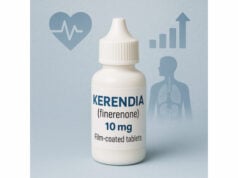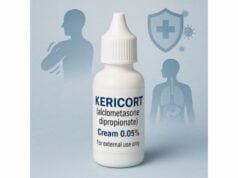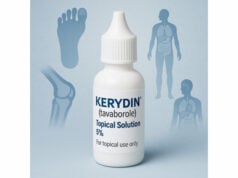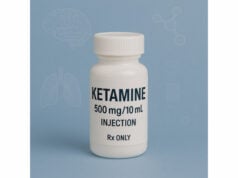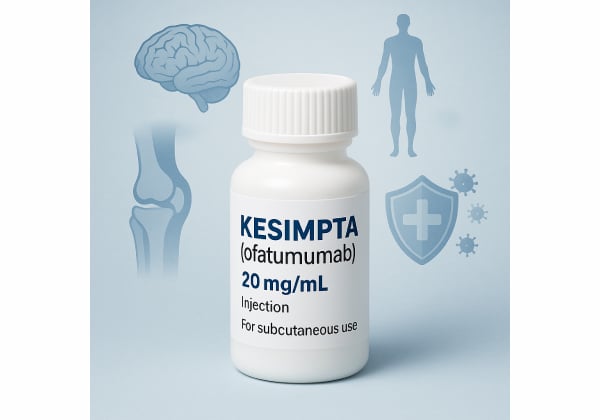
Kesimpta is a once-monthly, self-injected prescription medicine for adults with relapsing forms of multiple sclerosis (RMS), including clinically isolated syndrome, relapsing-remitting disease, and active secondary progressive disease. Its active ingredient, ofatumumab, is a fully human monoclonal antibody that targets CD20 on B cells—the immune cells that help drive MS inflammation. By selectively depleting these B cells while sparing stem cells and plasma cells, Kesimpta reduces relapses, new MRI lesions, and the risk of disability worsening. People choose it for three main reasons: strong efficacy comparable to infusion therapies, convenient at-home administration after an initial starter phase, and a safety profile focused on injection-site and infection-related effects rather than infusion reactions. Still, it is an immunomodulator; timing of vaccines, infection screening, and ongoing lab checks are essential. This guide translates the evidence into practical steps—who benefits most, how the dosing works, what to watch for, and how to plan around life events such as travel, pregnancy, and vaccinations—so you can collaborate with your neurology team on a clear, confident treatment plan.
Key Insights
- Monthly 20 mg subcutaneous ofatumumab lowers annualized relapse rates and new MRI lesions in relapsing MS.
- B-cell targeting reduces inflammatory activity while allowing gradual immune reconstitution between doses.
- Main risks are infections (especially upper respiratory), injection-site reactions, and reduced vaccine responses.
- Typical schedule: weeks 0, 1, and 2 starter injections, then 20 mg every 4 weeks thereafter.
- Avoid if you have active hepatitis B, a prior life-threatening reaction to ofatumumab, or uncontrolled severe infection; discuss pregnancy or breastfeeding plans in advance.
Table of Contents
- What Kesimpta is and how it works
- Does it work? Benefits you can expect
- How to start and use Kesimpta at home
- Dosing schedule and monitoring
- Side effects, risks, and who should avoid
- Interactions, vaccines, and life planning
- Evidence in context and alternatives
What Kesimpta is and how it works
Kesimpta (ofatumumab) is a fully human anti-CD20 monoclonal antibody delivered as a 20 mg subcutaneous injection. CD20 is a surface protein on mature B cells (pre-B to memory stages). By binding CD20, ofatumumab prompts B-cell depletion mainly through complement-dependent cytotoxicity and antibody-dependent cellular cytotoxicity. In multiple sclerosis, B cells contribute to disease activity through antigen presentation to T cells, cytokine secretion, and production of pathogenic antibodies inside the central nervous system. Reducing the pool of circulating B cells interrupts these inflammatory loops and lowers relapse risk.
A distinguishing feature of Kesimpta is its low-volume, under-the-skin dosing using a pen or syringe suitable for self-administration at home after training. Pharmacokinetically, monthly dosing maintains effective CD20 occupancy while allowing gradual reconstitution of the B-cell compartment after discontinuation. Because it is targeted therapy, Kesimpta does not deplete all immune cells; plasma cells (which lack CD20) are largely preserved, helping maintain baseline immunoglobulin levels, although gradual decreases can occur and should be monitored.
Where Kesimpta fits best:
- Adults with relapsing forms of MS who want high-efficacy disease modification without infusion center visits.
- People switching from orals or injectables due to breakthrough disease or tolerability issues.
- Individuals for whom regular MRI monitoring and lab safety checks are feasible.
Key limitations:
- As with other B-cell depleters, Kesimpta may dampen vaccine responses, and timing around immunizations matters.
- Infection risk increases modestly; screening (e.g., hepatitis B) and vigilance are required.
- It is not indicated for primary progressive MS.
Mechanism in plain language: Kesimpta selectively quiets the B-cell arm of the immune system that fuels MS attacks. With fewer activated B cells, fewer inflammatory signals reach the brain and spinal cord, which translates to fewer relapses and fewer new MRI spots over time.
Does it work? Benefits you can expect
In adults with relapsing MS, Kesimpta has demonstrated robust reductions in disease activity compared with a standard oral comparator. Benefits are seen across three fronts that matter to patients:
1) Fewer relapses. Annualized relapse rate falls meaningfully on Kesimpta compared with an active oral disease-modifying therapy. Clinically, patients report fewer acute attacks requiring steroids, fewer new neurologic symptoms, and improved day-to-day stability.
2) MRI improvement. Kesimpta sharply reduces the number of new or enlarging T2 lesions and gadolinium-enhancing lesions, indicating quieter inflammatory activity. Many clinicians use early MRI (at about 6–12 months) to confirm response, then extend the interval if stable.
3) Disability outcomes. Beyond relapses and MRI activity, Kesimpta lowers the risk of confirmed disability worsening over typical trial follow-up windows. While no therapy stops MS entirely, earlier use of high-efficacy agents is associated with better long-term trajectories for many patients.
Onset and trajectory. Some people notice fewer relapses within the first months; MRI benefits can be evident on the first surveillance scan after starting. Disability measures shift more slowly and require consistent therapy and time to show separation.
Who tends to benefit most?
- People with recent relapses, active MRI, or rapidly accruing lesions.
- Those with suboptimal response to platform injectables or orals.
- Individuals seeking high efficacy with home administration rather than infusions.
What “success” looks like in practice.
- No relapses, or a marked drop in relapse severity/frequency.
- MRI stability: zero or near-zero new T2 lesions and no enhancing lesions.
- Stable or improved function on neurologic exam and patient-reported outcomes.
Managing expectations. MS is heterogeneous. Some patients achieve no evidence of disease activity (NEDA) over several years; others may have occasional breaks in MRI quietness. A well-defined monitoring plan—clinical visits, periodic MRI, and labs—allows early course corrections (e.g., addressing adherence issues, intercurrent infections, or considering a therapy switch if needed).
Quality-of-life considerations. Compared with infusion therapies, Kesimpta can reduce logistical burdens (travel, time off work, exposure to infusion-center pathogens). The monthly cadence is simple, though calendar reminders help maintain timely dosing. For many, that simplicity makes long-term adherence more realistic, which is crucial to protecting brain and spinal cord tissue over time.
How to start and use Kesimpta at home
Starting correctly sets you up for durable success. Use this step-by-step framework (confirm details with your neurology team):
Before the first dose
- Screening labs: hepatitis B surface antigen and core antibody; quantitative immunoglobulins (IgG, IgM); basic blood counts. Some clinicians also check varicella immunity and tuberculosis risk based on history.
- Vaccinations: bring routine immunizations up to date; complete any live vaccines (if indicated) at least 4 weeks before starting and non-live vaccines 2 weeks before when possible.
- Education: device training (autoinjector pen or prefilled syringe), disposal of sharps, and when to call for help.
The injection schedule
- Starter phase: Inject 20 mg subcutaneously at week 0, week 1, and week 2.
- Maintenance: Inject 20 mg every 4 weeks starting at week 4 (i.e., once monthly).
Choosing an injection site
- Preferred sites: abdomen (avoiding 5 cm around the navel), thigh, or upper outer arm (arm typically requires a caregiver).
- Rotate sites; avoid scars, moles, or areas that are red, bruised, or infected.
Practical technique
- Remove the pen/syringe from the refrigerator and allow it to reach room temperature per instructions.
- Wash hands; clean the site with an alcohol swab and let it dry.
- Inject subcutaneously (not into muscle). Follow the device’s on-body instructions until the indicator shows completion.
- Dispose of the pen/syringe in a FDA-cleared sharps container.
- Observe the site for redness, swelling, or pain. Mild reactions are common and usually fade within 24–48 hours.
If you miss a dose
- Inject as soon as you remember, then reset the monthly schedule from that new date. Avoid doubling doses.
Supportive habits
- Set calendar alerts for the monthly schedule.
- Keep backup pens on hand and confirm refrigeration (store as labeled; many products can be kept at room temperature for limited periods—follow the specific storage window provided with your prescription).
- Maintain footing with your care team: report infections, fevers, or new neurologic symptoms promptly.
Travel tips
- Carry pens in insulated packaging within allowed temperature ranges.
- Know airline rules for sharps; bring documentation if needed.
- Keep dose timing consistent across time zones; the 4-week interval offers flexibility—choose a consistent “anchor day.”
Dosing schedule and monitoring
Dosing summary
- Starter: 20 mg at weeks 0, 1, and 2.
- Maintenance: 20 mg every 4 weeks thereafter.
- Formulation: Single-use, preservative-free solution in an autoinjector pen or prefilled syringe.
Monitoring plan (clinic workflows vary)
- Baseline: hepatitis B panel (HBsAg, anti-HBc), quantitative IgG/IgM, complete blood count; consider varicella immunity if status unknown.
- During therapy:
- Infections: Ask about respiratory and urinary symptoms at each contact.
- Immunoglobulins: Repeat IgG/IgM periodically (e.g., annually, or sooner if recurrent infections).
- MRI: Typically at 6–12 months after start to confirm response, then yearly if stable.
- Vaccinations: Plan non-live vaccines mid-cycle (roughly 2–3 weeks after a dose) to optimize response; live vaccines are avoided during active B-cell depletion.
Stopping or delaying doses
- Active serious infection: Delay until recovered. Notify your clinic if you develop fever, chest pain, shortness of breath, or persistent cough.
- Very low immunoglobulins plus recurrent infections: Your clinician may hold therapy and consider immunology consults or alternative DMTs.
- Surgery: Many minor procedures proceed without changes; for major elective surgery, coordinate timing to balance infection risk and MS stability.
Pregnancy and family planning
- There are no adequate controlled data in pregnancy; discuss contraceptive use and timing if you plan to conceive. Because B-cell effects can persist, clinicians may recommend a washout interval before attempting pregnancy. If pregnancy occurs, inform your provider promptly to weigh risks and benefits. Breastfeeding data are limited; individualized decisions are standard.
When response is suboptimal
- Confirm adherence and dose timing.
- Review MRI to distinguish radiographic progression from transient symptoms (e.g., infection-related pseudo-relapse).
- Consider factors like sleep, vitamin D status, and comorbidities that impact function.
- If disease remains active, discuss switching strategies within the high-efficacy category or to a therapy with a different mechanism.
Long-term view
- Many patients remain on Kesimpta for multiple years with stable disease. If transitioning off, expect gradual B-cell reconstitution; timing of the next agent is planned to prevent rebound while respecting safety windows.
Side effects, risks, and who should avoid
Common side effects
- Injection-site reactions: redness, pain, swelling, itching; usually mild and self-limited.
- Upper respiratory infections: nasopharyngitis, sinus symptoms, cough; often manageable with routine care.
- Headache or fatigue: typically early and transient.
Less common but important
- Herpesvirus reactivation (e.g., shingles); seek care for dermatomal rash or eye pain.
- Decreased immunoglobulins over time (especially IgM, sometimes IgG); associated with increased infection susceptibility.
- Hypersensitivity reactions: rare immediate reactions; stop and seek help if you develop hives, facial swelling, or breathing difficulty.
- Progressive multifocal leukoencephalopathy (PML): an extremely rare brain infection linked to severe immunosuppression across multiple therapies. Any subacute neurologic decline (e.g., new weakness, vision change, confusion) requires urgent evaluation.
Boxed or highlighted warnings to understand in practice
- Infections: Treat active infections before initiation; postpone dosing during significant infections. Educate on early symptoms and when to call.
- Hepatitis B reactivation: Screen before starting. In people with evidence of past infection, coordinate with hepatology for monitoring or prophylaxis as appropriate.
- Immunizations: Avoid live vaccines during treatment; time non-live vaccines to optimize responses.
Who should avoid or use with caution
- Active hepatitis B infection or history suggestive of reactivation risk without specialist oversight.
- Severe, uncontrolled infections at baseline.
- Known life-threatening hypersensitivity to ofatumumab or formulation components.
- Unresolved, unexplained neurologic symptoms without full workup (rule out PML or other causes before starting additional immunotherapy).
- Pregnancy or breastfeeding: decisions are individualized; many clinicians prefer planning a washout before conception when feasible.
Everyday risk-reduction tips
- Practice hand hygiene, manage nasal allergies (which can predispose to sinus infections), and keep dental care up to date.
- Address sleep, stress, and exercise to support immune resilience.
- Keep a fever plan: when to test for COVID-19/flu, when to notify the clinic, and what thresholds warrant urgent care.
Most side effects are manageable when you and your care team monitor proactively and act early. The goal is steady disease control with few interruptions and no surprises.
Interactions, vaccines, and life planning
Drug–drug interactions
- Kesimpta is a monoclonal antibody cleared by proteolysis rather than liver enzymes, so classical CYP interactions are not expected. You can usually continue blood pressure medicines, statins, antidepressants, and most common drugs.
- Avoid starting other potent immunosuppressants without coordination; stacking immunosuppression can raise infection risk.
Vaccines
- Live vaccines (e.g., MMR, varicella, live-attenuated influenza nasal spray) are not recommended during treatment.
- Non-live vaccines (e.g., influenza shot, COVID-19 mRNA, Tdap, pneumococcal) are allowed, but responses may be blunted. To optimize, schedule them mid-cycle (about 2–3 weeks after your last dose and 1–2 weeks before the next). Even partial protection beats none—stay current.
- Household contacts should follow standard vaccination schedules; avoiding live oral vaccines that shed to close contacts may be considered on a case-by-case basis.
Infections and everyday exposure
- Air travel, offices, and schools are manageable with simple precautions: stay home when ill, mask during outbreak surges, and favor outdoor or well-ventilated settings if you’re recovering from a recent infection.
Fertility, pregnancy, and breastfeeding
- Discuss timelines early. If planning a pregnancy, your neurologist may propose a transition strategy to minimize relapse risk while limiting fetal exposure. If pregnancy occurs on therapy, notify your team promptly to individualize decisions and neonatal monitoring (e.g., B-cell counts if exposure was late in pregnancy).
Dental, dermatologic, and minor procedures
- Most routine care continues normally. For invasive dental work or dermatologic surgery, inform providers that you use a B-cell depleter; they may coordinate timing around a scheduled monthly dose.
Insurance and access
- Many plans require prior authorization. Keep organized records (MRI reports, relapse documentation, prior DMT history) to streamline renewals. Manufacturer support programs can help with training and copay needs.
Travel and storage
- Store as labeled and avoid freezing or heat. For extended trips, request extra pens and discuss storage logistics; document temperature excursions if they occur and consult the pharmacy.
A bit of planning—especially around vaccines, procedures, and family goals—keeps life moving while your MS stays quiet.
Evidence in context and alternatives
Where Kesimpta sits among MS therapies
- It is a high-efficacy B-cell depleter within the anti-CD20 class. Clinical performance on relapses, MRI, and disability outcomes is competitive with infusion-based agents, with the convenience of at-home dosing.
- Compared with oral platform therapies, Kesimpta typically delivers greater reductions in MRI activity and relapses, at the cost of more immune-related monitoring.
Alternatives to discuss with your neurologist
- Ocrelizumab (anti-CD20 infusion every 6 months): similar mechanism; infusion-center administration and infusion reactions are considerations.
- Rituximab (off-label in some regions): anti-CD20 infusion with varied dosing schemas.
- S1P receptor modulators (fingolimod, ozanimod, ponesimod): oral options with first-dose cardiac monitoring considerations and rebound risk if abruptly stopped.
- Cladribine tablets: short yearly treatment courses that produce longer immune re-set periods; requires pregnancy planning and malignancy screening.
- Natalizumab: high-efficacy infusion with PML risk stratified by JCV antibody index and treatment duration.
- Teriflunomide, dimethyl fumarate, interferons, and glatiramer acetate: options with long clinical experience; efficacy may be lower in highly active disease but side-effect profiles and monitoring can suit specific patient goals.
When to switch
- Breakthrough disease: new relapses or MRI activity despite adherence.
- Safety issues: recurrent significant infections, sustained low immunoglobulins with clinical consequences, or serious adverse reactions.
- Life-stage changes: pregnancy planning or changes in insurance/access.
What makes Kesimpta distinctive
- Self-injection at home after a short starter phase eliminates infusion visits.
- Monthly cadence is simple yet maintains B-cell control.
- Human antibody design reduces the risk of anti-drug antibodies compared with chimeric constructs.
Cost–benefit thinking
- High-efficacy therapy up front can preserve neurological reserve, potentially lowering long-term disability burden. That value must be weighed against monitoring needs, infection vigilance, and financial logistics.
Your “best therapy” balances disease control, safety, convenience, and life plans. With clear goals and scheduled follow-up, Kesimpta is a strong cornerstone option for many with relapsing MS.
References
- KESIMPTA (ofatumumab) injection, for subcutaneous use Prescribing Information 2024 (Guideline).
- Ofatumumab versus Teriflunomide in Multiple Sclerosis 2020 (RCT).
- Kesimpta 2024 (Guideline).
- Efficacy of COVID-19 Vaccines in Patients With Multiple Sclerosis Under Disease-Modifying Therapies: A Systematic Review and Meta-Analysis 2021 (Systematic Review).
- Humoral and Cellular Immune Responses to SARS-CoV-2 Vaccination in Patients With Multiple Sclerosis Receiving Anti-CD20 Therapy 2021 (Systematic Review).
Disclaimer
This article is for general education and is not a substitute for personalized medical advice, diagnosis, or treatment. Always consult your neurologist or qualified health professional before starting, stopping, or changing any medication, and seek prompt care for signs of infection, allergic reaction, or new neurologic symptoms. If you found this guide helpful, please consider sharing it on Facebook, X (formerly Twitter), or any platform you prefer, and follow us on social media. Your support helps us continue creating high-quality, people-first health content.

